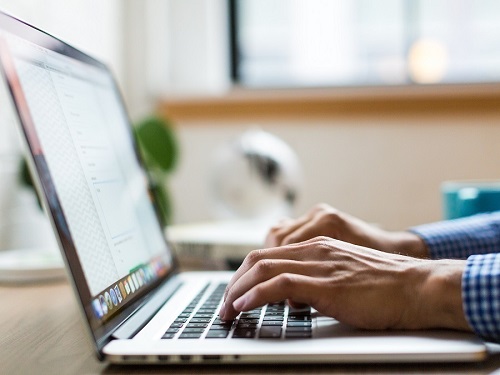Travelling with technology has become essential in today’s world. Whether for work, communication, or entertainment, we depend heavily on our devices. However, travel can expose these gadgets to a range of risks, including theft, damage, and loss.
To help you safeguard your tech, we’ve compiled some useful tips to reduce the risk of mishaps during your travels. Follow these eight best practices to keep your devices secure on your next trip.
1. Use Protective Cases
Invest in high-quality protective cases. They can shield your gadgets from accidental drops, bumps, and scratches. Choose cases that offer both durability and a snug fit. For laptops and tablets, consider hard-shell cases. For smartphones, opt for cases that protect the edges and have raised bezels. Taking this simple precaution can help prevent costly repairs.
2. Utilise Tracking Apps
Install tracking apps on all your devices. These apps allow you to locate your gadgets if they’re lost or stolen. Many operating systems come with built-in tracking features. Make sure to enable them before you travel. For example, Apple users can use “Find My” for their devices, while Android users can activate “Find My Device.” These tools not only help locate your devices but also provide remote locking and wiping options.
3. Keep Devices Close
Always keep your devices within arm’s reach. Avoid placing them in checked luggage; instead, carry them in your personal bag. Consider using a backpack or crossbody bag with secure compartments. If you must leave your devices unattended, store them in a hotel safe. Reducing your gadgets’ exposure to potential theft or damage minimises the risk.
4. Use Strong Passwords
Ensure all your devices are protected with strong passwords, including laptops, smartphones, and tablets. Create a password using a mix of letters, numbers, and special characters. Avoid using obvious information such as birthdays or common words. For extra security, enable two-factor authentication. This step helps safeguard your data if your device falls into the wrong hands.
5. Be Wary of Public Wi-Fi
While public Wi-Fi is convenient, it poses a significant security risk. Avoid accessing sensitive information on public networks. If you must use public Wi-Fi, use a Virtual Private Network (VPN) to encrypt your data, making it more difficult for hackers to intercept. Turn off automatic connections to public networks and verify the legitimacy of any Wi-Fi network before connecting.
6. Back Up Your Data
Regularly back up your data before travelling. Use cloud storage or external hard drives to ensure you don’t lose important information if your device is stolen or misplaced. Automating backups can make this process even easier. By backing up your data, you protect yourself from loss and ensure continuity if something goes wrong.
7. Be Aware of Your Surroundings
Stay vigilant and aware of your surroundings, especially in crowded areas such as airports, train stations, and tourist attractions. Don’t leave your devices unattended, and always keep a secure hold on your bag. When using your gadgets in public, limit how long they’re visible. Awareness and caution are key to protecting your tech.
8. Invest in Anti-Theft Accessories
Anti-theft accessories such as laptop locks and cables can provide an extra layer of security. Anti-theft backpacks, designed with hidden zippers and cut-resistant materials, make it more difficult for thieves to access your belongings. You might also consider RFID-blocking wallets to protect against electronic theft. These accessories can significantly enhance the security of your gadgets.
Additional Considerations
Alongside these primary tips, there are several other measures that can further protect your devices while travelling.
Insure Your Devices
Consider purchasing insurance for your gadgets. Many insurance providers offer policies that cover theft, loss, or damage. Review the coverage details to ensure it meets your needs. Insurance can provide peace of mind and financial protection, especially if you’re travelling with high-value devices.
Customise Your Device Settings
Before heading off on your trip, adjust your device settings to enhance security. Enable remote wiping, which allows you to erase your data if your device is stolen. Turn off Bluetooth and location services when not in use to minimise the risk of unauthorised access and tracking.
Keep a Record of Your Devices
Record the make, model, and serial numbers of your gadgets and store this information in a safe place. In the event your device is lost or stolen, these details will be invaluable when reporting the incident or making an insurance claim.
Prepare for Customs Inspections
Be mindful that customs officials may inspect your devices. Keep them easily accessible in your carry-on luggage and be prepared to power them on if requested. Make sure your devices are fully charged before you travel to avoid delays and complications during inspections.
Practical Scenarios
Let’s explore some common situations where you can apply these tips:
Scenario 1: Airport Security
At airport security, remove your laptop from your bag and place it in a separate bin for screening. Keep a close watch on your belongings as they pass through the X-ray machine, and promptly retrieve and secure your devices after screening.
Scenario 2: Hotel Room
In your hotel room, store your gadgets in the room’s safe when they’re not in use. If there’s no safe available, use a portable lockbox. Avoid leaving your devices out in the open, especially if housekeeping is scheduled. This reduces the risk of theft.
Scenario 3: Public Transport
On public transport, keep your devices close and secure. Use a bag with anti-theft features and avoid using your gadgets near doors or exits where they could be easily snatched. Be discreet when taking out your devices, and store them securely after use.
Need Assistance Securing Your Devices?
Technology is a vital part of modern travel, but safeguarding your gadgets requires careful planning and vigilance. Do you need further assistance beyond these tips?
Contact us today to discuss how we can help strengthen the security of your devices.



